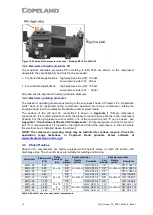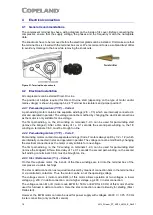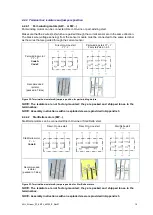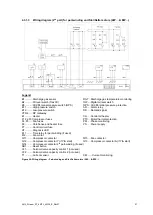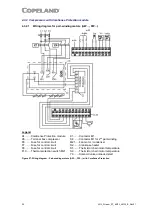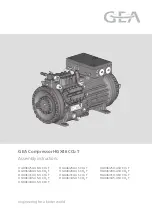
AGL_Stream_ST_4MTL_4MSL_E_Rev01
7
discharge shut-off valve) the temperature is expected to be 15-20 K lower than inside the cylinder
head. This fact must be taken into account when applying the values in
Table 4
below.
Application
Minimum
superheat
required
Minimum oil
temperature
required
Maximum acceptable discharge
temperature
Stream
Scroll
Low temp
20 K / 36 °F
30 °C / 86 °F
154.4 °C / 310 °F 121.1 °C / 250 °F
Medium temp
10 K / 18 °F
30 °C / 86 °F
154.4 °C / 310 °F
N/A
Compressors in parallel
or multi-compressors
10 K / 18 °F
30 °C / 86 °F
154.4 °C / 310 °F
N/A
Table 4: Superheat recommendations
Attention!
The values shown in
Table 4
are maximum temperature values inside the cylinder head.
When using a discharge temperature sensor on the discharge line, the temperature drop has to be
considered for the high DLT cut-out setpoint.
NOTE: An additional internal heat exchanger might be required to ensure the recommended
suction superheat values on the compressor inlet are achieved.
2.5 Design features
2.5.1 Compressor construction
Stream CO
2
compressors have a large discharge chamber to eliminate pulsations. The cylinder
heads and the discharge plenum are designed to minimize the heat transfer to suction side.
Each cylinder head has a plugged 1/8" - 27 NPTF tapped hole on the high pressure.
Figure 6: Compressor external view
2.5.2 Compressor cooling
Compressor motor cooling must be ensured in all circumstances.
All Stream CO
2
compressors are suction gas-cooled. With suction gas-cooled compressors, the
motor is cooled by refrigerant gas that is led through / over the motor. Depending upon the operating
conditions, the maximum allowed suction gas superheat shall not exceed the values shown in the
envelopes.
2.5.3 Lubrication
For small- and medium-size Stream CO
2
compressors (4MSL-03 to 4MSL-15, 4MTL-05 to 4MTL-
30), an oil splasher system ensures proper lubrication at constant or variable speed.
For large models (4MTL-35 to 4MTL-50) an oil pump is used:
▪
On compressors with Next Generation CoreSense
™ (-N) or formerly delivered with CoreSense™
Diagnostics (-D), the oil pump integrates an electronic switch to ensure the oil pressure safety
functionality.
▪
Compressors with CoreSense
™ Protection (-P) are designed to accommodate fittings for an
OPS2 or a standard oil pressure switch (OPS2 oil sensor included in the oil pump).
▪
The oil pumps used on these compressors are independent of their rotating direction.

















